
Plyometric exercises are the rapid deceleration and acceleration of muscles that create a stretch-shortening cycle. The exercises train the muscles, connective tissue and nervous system to effectively carry out the stretch-shortening cycle, thereby improving an athlete's performance. Plyometric drills can be a fundamental part of training for each and every event in sport. Most competitive sports require a rapid deceleration of the body followed by almost immediate acceleration in the opposite direction.
Plyometric drills help develop rhythm, speed, power and even muscular endurance. Plyometrics, used correctly and for a specific purpose, can be a tremendous asset to your individual athlete as well as to the general and specific conditioning of your entire sport program.
Coaches' Guidelines for Teaching Plyometrics
All plyometric exercises must be done in flats on a soft surface.
Start with one set of each exercise, working toward three more sets.
Judge whether the athlete has the proper motor skills for properly executing the drills. If the athlete has poor form, stop the drill.
Always start with simple drills and progress to more difficult.
Properly warm-up and stretch before each plyometric workout and follow with a proper cool-down.
Have the athletes execute the drills with 100 percent effort to ensure best training results.
Take a 1-2 minute rest between successive exercise sequences.
Perform a number of repetitions according to the intensity of the drill and the condition of the athlete. The athlete will only benefit from reps performed properly.
Never perform plyometric drills on the same day as a weight training session.
Each set should last no longer than 6-8 seconds.
Full recovery should occur between sets.
Start with easy exercises and develop in intensity and complexity.
Stop before fatigue breaks down technique.
Always emphasize proper technique.
Integrate plyometrics as a part of the training program.
Remember a large part of the initial training may be spent on teaching your athletes.
Plyometric Drills
Exploding Harvards
Reps: 10 jumps each leg; gradually increase to 20 jumps each leg
Purpose
Introduce athletes to plyometric training
Equipment
Box or step to create knee angle of 80-120 degrees
Teaching Steps
Take "hips tall" position facing box
Step one foot up onto box; weight is forward and over flexed leg on box
Arms are in sprint motion
Powerfully push down leg on box, bring hips directly over leg on box; maintain "hips tall" position
Return to starting position
Repeat quickly
Points of Emphasis: A knee angle much less than 80 degrees puts undue stress on knee
Obtain maximum height
When to Use: Start in second week of training; stop two weeks prior to major competitions
Bounding Drills
Low Slow Bounding
Reps: 2x30M, gradually increase to 3x50M
Purpose
Develops dynamic flexibility in the hip joint
Develops strength and power
Teaching Steps
Take "hips tall" position and bend to squat position
Jump outward driving bending right knee to chest while extending left leg
Stay low
Upon landing, powerfully extend forward leg while driving back leg knee to chest
Arm swing is in sprinting action
Points of Emphasis: Briefly float at the top of bound — both legs are off ground
Foot strike is toward ball of foot
When to Use: Start in second week of training; stop two weeks prior to major competitions
Power Bounding
Reps: 2x30M, gradually increase to 3x50M
Purpose
Develops dynamic flexibility in the hip joint
Develops strength and power
Creates greater responsiveness to exercises
Teaching Steps
Take "hips tall" position
Jump outward and upward driving bending right knee to chest while extending left leg
Upon landing, powerfully extend forward leg while driving back leg knee to chest
Arm swing is in sprinting action
Points of Emphasis: Small beginning jog builds momentum and velocity
Hang time is long, longer than low slow bound
Torso and trunk are also tall
Foot strike is more of a flat foot
When to Use: Start in second week of training; stop two weeks prior to major competitions
Speed Bounding
Reps: 2x30M, gradually increase to 3x50M
Purpose
Develops power
Teaching Steps
Take "hips tall" position
Jump outward and upward, driving bending right knee to chest while extending left leg
Upon landing, powerfully extend forward leg while driving back leg knee to chest
Arm swing is in sprinting action
Points of Emphasis: Beginning run builds velocity
Short ground contact time — be very quick
No hang time
Foot strike is very active and toward ball of foot
When to Use: Start in second week of training; stop two weeks prior to major competitions
Straight Leg Bounds
Reps: 2x30M, gradually increase to 3x50M
Purpose
Develops strength, especially quadriceps
Teaching Steps
Take "hips tall" position, begin jogging
Extend left leg and drive up toward sky, foot is flexed
Alternate legs
Arm swing is in sprinting action
Points of Emphasis: Feels as if pulling ground past feet
Short ground contact time — be very quick
Ground contact time is slightly in front of body
Foot strike is very active and on ball of foot
When to Use: Start in second week of training; stop two weeks prior to major competitions
Hops
Swedish Hops
Reps: 2x30M, gradually increase to 3x50M
Purpose
Develop effective use of the legs
Teaching Steps
Take "hips tall" position
Step out with one foot; jumping upward, drive up the other knee as high as possible
Flex the bent leg completely, with foot under buttock
Use arms to achieve maximum lift
Upon landing, jump quickly upward again driving back leg up toward sky, foot under buttock
Points of Emphasis: Emphasis is on maximum lift
Work at gaining height and distance, do not sacrifice repetition rate
Looks like continuous high skipping
When to Use: Start in second week of training; stop two weeks prior to major competitions
Single Leg Hops
Reps: 2x30M, Gradually increase to 3x50M
Purpose
Develops coordination and strength
Teaching Steps
Take "hips tall" position, placing one leg in front of other; front leg is hopping leg
Drive hips up and forward powerfully
Pull heel of hopping leg to buttock, followed by swinging knee forward and up
When thigh is parallel to ground, abruptly extend leg
Strike ground with high backward foot speed
Opposite foot cycles as if used, yet does not touch ground
Arm swing is in sprinting action
Points of Emphasis: Foot strike is flat of foot
When to Use: Start in second week of training; stop two weeks prior to major competitions
Double Leg Hops
Reps: 2x30M, gradually increase to 3x50M
Purpose
Develops strength
Teaching Steps
Take "hips tall" position and bend to squat position
Bend at hips while driving arms back
Jump powerfully up and out, extending legs, driving arms up over head
Points of Emphasis: Foot strike is on flat of foot When to Use: Start in second week of training; stop two weeks prior to major competitions
Hurdle Hops
Reps: 2x30M, gradually increase to 3x50M
Purpose
Develops dynamic flexibility in the hip joint
Develops explosiveness and power
Strengthens abdominals
Teaching Steps
Take "hips tall" position
Jump, drive both knees toward chest
Arms drive up as you reach top of hurdle
Repeat over 5-8 hurdles
Points of Emphasis: High, powerful knee drive When to Use: Start in second week of training; stop two weeks prior to major competitions
Skipping
Reps: 2x40-50M, gradually increase to 3x100M
Purpose
Develop effective use of the legs
Teaching Steps
Begin with one leg forward
Drive off the back leg; start short skipping step with opposite leg
Drive knee up toward chest
Upon landing, repeat with other leg
Points of Emphasis: Gain as much height as possible with maximum hang time
Good for long and high jumps
When to Use: Start in second week of training; stop two weeks prior to major competitions
Drum Major
Reps: 2x30M, gradually increase to 3x50M
Purpose
Develops dynamic flexibility in the hip joint
Strengthens abdominals
Teaching Steps
Take "hips tall" position
Drive right knee toward chest
Extend leg out, foot flexed
Drive leg down to ground
Alternate legs
Points of Emphasis: High, powerful knee drive
Depth Jumping for Jumpers
Reps: 10 jumps each leg; gradually increase to 20 jumps each leg
Purpose
Develop leg power
Teaching Steps
Stand on box in "hips tall" position
Jump down from box and immediately drive knees up jumping onto next box
Or
Teaching Steps
Take "hips tall" position
Drive knees/arms up as jumping on box
Jump down from box and immediately drive knees/arms up jumping onto next box
Jump Variations:
Low Box — Ground — Low Box
Low Box — Ground — High Box
Low Box — Ground — High Box — Ground — Low Box
High Box — Ground — High Box — Ground — Low Box
Points of Emphasis: Single leg box jumps: box is approximately 12 inches high
Double leg box jumps: box is approximately 18-24 inches high
When to Use: 1-2 times per week with 1-2 days between sessions
Athletes need 10-14 days recovery before competition
Plyometric drills help develop rhythm, speed, power and even muscular endurance. Plyometrics, used correctly and for a specific purpose, can be a tremendous asset to your individual athlete as well as to the general and specific conditioning of your entire sport program.
Coaches' Guidelines for Teaching Plyometrics
All plyometric exercises must be done in flats on a soft surface.
Start with one set of each exercise, working toward three more sets.
Judge whether the athlete has the proper motor skills for properly executing the drills. If the athlete has poor form, stop the drill.
Always start with simple drills and progress to more difficult.
Properly warm-up and stretch before each plyometric workout and follow with a proper cool-down.
Have the athletes execute the drills with 100 percent effort to ensure best training results.
Take a 1-2 minute rest between successive exercise sequences.
Perform a number of repetitions according to the intensity of the drill and the condition of the athlete. The athlete will only benefit from reps performed properly.
Never perform plyometric drills on the same day as a weight training session.
Each set should last no longer than 6-8 seconds.
Full recovery should occur between sets.
Start with easy exercises and develop in intensity and complexity.
Stop before fatigue breaks down technique.
Always emphasize proper technique.
Integrate plyometrics as a part of the training program.
Remember a large part of the initial training may be spent on teaching your athletes.
Plyometric Drills
Exploding Harvards
Reps: 10 jumps each leg; gradually increase to 20 jumps each leg
Purpose
Introduce athletes to plyometric training
Equipment
Box or step to create knee angle of 80-120 degrees
Teaching Steps
Take "hips tall" position facing box
Step one foot up onto box; weight is forward and over flexed leg on box
Arms are in sprint motion
Powerfully push down leg on box, bring hips directly over leg on box; maintain "hips tall" position
Return to starting position
Repeat quickly
Points of Emphasis: A knee angle much less than 80 degrees puts undue stress on knee
Obtain maximum height
When to Use: Start in second week of training; stop two weeks prior to major competitions
Bounding Drills
Low Slow Bounding
Reps: 2x30M, gradually increase to 3x50M
Purpose
Develops dynamic flexibility in the hip joint
Develops strength and power
Teaching Steps
Take "hips tall" position and bend to squat position
Jump outward driving bending right knee to chest while extending left leg
Stay low
Upon landing, powerfully extend forward leg while driving back leg knee to chest
Arm swing is in sprinting action
Points of Emphasis: Briefly float at the top of bound — both legs are off ground
Foot strike is toward ball of foot
When to Use: Start in second week of training; stop two weeks prior to major competitions
Power Bounding
Reps: 2x30M, gradually increase to 3x50M
Purpose
Develops dynamic flexibility in the hip joint
Develops strength and power
Creates greater responsiveness to exercises
Teaching Steps
Take "hips tall" position
Jump outward and upward driving bending right knee to chest while extending left leg
Upon landing, powerfully extend forward leg while driving back leg knee to chest
Arm swing is in sprinting action
Points of Emphasis: Small beginning jog builds momentum and velocity
Hang time is long, longer than low slow bound
Torso and trunk are also tall
Foot strike is more of a flat foot
When to Use: Start in second week of training; stop two weeks prior to major competitions
Speed Bounding
Reps: 2x30M, gradually increase to 3x50M
Purpose
Develops power
Teaching Steps
Take "hips tall" position
Jump outward and upward, driving bending right knee to chest while extending left leg
Upon landing, powerfully extend forward leg while driving back leg knee to chest
Arm swing is in sprinting action
Points of Emphasis: Beginning run builds velocity
Short ground contact time — be very quick
No hang time
Foot strike is very active and toward ball of foot
When to Use: Start in second week of training; stop two weeks prior to major competitions
Straight Leg Bounds
Reps: 2x30M, gradually increase to 3x50M
Purpose
Develops strength, especially quadriceps
Teaching Steps
Take "hips tall" position, begin jogging
Extend left leg and drive up toward sky, foot is flexed
Alternate legs
Arm swing is in sprinting action
Points of Emphasis: Feels as if pulling ground past feet
Short ground contact time — be very quick
Ground contact time is slightly in front of body
Foot strike is very active and on ball of foot
When to Use: Start in second week of training; stop two weeks prior to major competitions
Hops
Swedish Hops
Reps: 2x30M, gradually increase to 3x50M
Purpose
Develop effective use of the legs
Teaching Steps
Take "hips tall" position
Step out with one foot; jumping upward, drive up the other knee as high as possible
Flex the bent leg completely, with foot under buttock
Use arms to achieve maximum lift
Upon landing, jump quickly upward again driving back leg up toward sky, foot under buttock
Points of Emphasis: Emphasis is on maximum lift
Work at gaining height and distance, do not sacrifice repetition rate
Looks like continuous high skipping
When to Use: Start in second week of training; stop two weeks prior to major competitions
Single Leg Hops
Reps: 2x30M, Gradually increase to 3x50M
Purpose
Develops coordination and strength
Teaching Steps
Take "hips tall" position, placing one leg in front of other; front leg is hopping leg
Drive hips up and forward powerfully
Pull heel of hopping leg to buttock, followed by swinging knee forward and up
When thigh is parallel to ground, abruptly extend leg
Strike ground with high backward foot speed
Opposite foot cycles as if used, yet does not touch ground
Arm swing is in sprinting action
Points of Emphasis: Foot strike is flat of foot
When to Use: Start in second week of training; stop two weeks prior to major competitions
Double Leg Hops
Reps: 2x30M, gradually increase to 3x50M
Purpose
Develops strength
Teaching Steps
Take "hips tall" position and bend to squat position
Bend at hips while driving arms back
Jump powerfully up and out, extending legs, driving arms up over head
Points of Emphasis: Foot strike is on flat of foot When to Use: Start in second week of training; stop two weeks prior to major competitions
Hurdle Hops
Reps: 2x30M, gradually increase to 3x50M
Purpose
Develops dynamic flexibility in the hip joint
Develops explosiveness and power
Strengthens abdominals
Teaching Steps
Take "hips tall" position
Jump, drive both knees toward chest
Arms drive up as you reach top of hurdle
Repeat over 5-8 hurdles
Points of Emphasis: High, powerful knee drive When to Use: Start in second week of training; stop two weeks prior to major competitions
Skipping
Reps: 2x40-50M, gradually increase to 3x100M
Purpose
Develop effective use of the legs
Teaching Steps
Begin with one leg forward
Drive off the back leg; start short skipping step with opposite leg
Drive knee up toward chest
Upon landing, repeat with other leg
Points of Emphasis: Gain as much height as possible with maximum hang time
Good for long and high jumps
When to Use: Start in second week of training; stop two weeks prior to major competitions
Drum Major
Reps: 2x30M, gradually increase to 3x50M
Purpose
Develops dynamic flexibility in the hip joint
Strengthens abdominals
Teaching Steps
Take "hips tall" position
Drive right knee toward chest
Extend leg out, foot flexed
Drive leg down to ground
Alternate legs
Points of Emphasis: High, powerful knee drive
Depth Jumping for Jumpers
Reps: 10 jumps each leg; gradually increase to 20 jumps each leg
Purpose
Develop leg power
Teaching Steps
Stand on box in "hips tall" position
Jump down from box and immediately drive knees up jumping onto next box
Or
Teaching Steps
Take "hips tall" position
Drive knees/arms up as jumping on box
Jump down from box and immediately drive knees/arms up jumping onto next box
Jump Variations:
Low Box — Ground — Low Box
Low Box — Ground — High Box
Low Box — Ground — High Box — Ground — Low Box
High Box — Ground — High Box — Ground — Low Box
Points of Emphasis: Single leg box jumps: box is approximately 12 inches high
Double leg box jumps: box is approximately 18-24 inches high
When to Use: 1-2 times per week with 1-2 days between sessions
Athletes need 10-14 days recovery before competition

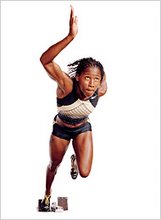
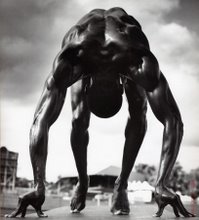



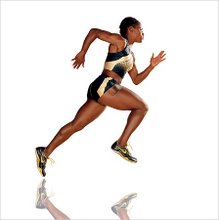
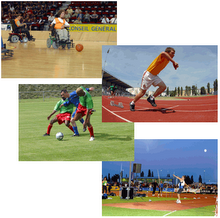


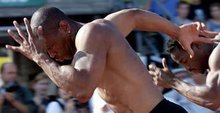






3 yorum:
[B]NZBsRus.com[/B]
No More Crawling Downloads With NZB Files You Can Hastily Search HD Movies, Console Games, MP3s, Software and Download Them at Rapid Speeds
[URL=http://www.nzbsrus.com][B]Usenet Search[/B][/URL]
It isn't hard at all to start making money online in the hush-hush world of [URL=http://www.www.blackhatmoneymaker.com]blackhat techniques[/URL], You are far from alone if you don't know what blackhat is. Blackhat marketing uses not-so-popular or misunderstood avenues to generate an income online.
[url=http://www.realcazinoz.com]casino[/url], also known as effective casinos or Internet casinos, are online versions of notable ("chunk and mortar") casinos. Online casinos concurrence gamblers to affect up and wager on casino games with the abet the Internet.
Online casinos normally submit on the bloke base odds and payback percentages that are comparable to land-based casinos. Some online casinos contend higher payback percentages with a assume trust to spell automobile games, and some split the expos‚ deviant payout matter audits on their websites. Assuming that the online casino is using an aptly programmed unspecific uncountable generator, catalogue games like blackjack clothed an established forebears edge. The payout ditty as a replacement pro these games are established at close by the rules of the game.
Assorted online casinos appoint activity or make stumble on their software from companies like Microgaming, Realtime Gaming, Playtech, Global Conspiracy Technology and CryptoLogic Inc.
Yorum Gönder